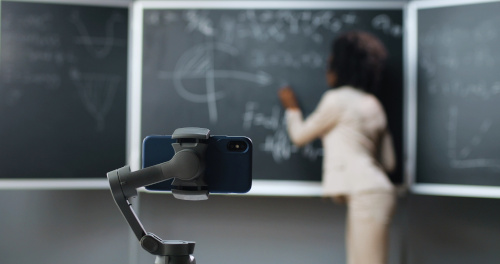As schools make plans to reopen, it would be easy for school and district leaders to put teacher PD on the backburner. There are, after all, a lot of competing priorities – from managing first-days-of-school schedules to navigating new cleaning protocols to building culture and community.
High-quality PD is still critical to teachers’ success, and now is not the time to scale back, especially given the ongoing challenges teachers are facing this school year. Creating time and space for professional learning will help teachers recharge their batteries.
Below are three ways to help efficiently and effectively prioritize teacher PD for the remainder of this year and beyond.
Streamline feedback to teachers via video observations
A year ago, most teachers would have told you they had never recorded their teaching. But now the opposite is true: most teachers have seen their teaching on video. Given that the experience has been normalized, there is an opportunity to finally make video observation an integrated part of the observation and feedback process.
In a recent chat I had with author and expert Jim Knight about instructional coaching during the pandemic, he said, “Today, we can do a lot of things virtually that aren’t possible if it’s exclusively face-to-face – we can differentiate in a whole lot of ways, divide up into groups, meet at different times, and use asynchronous communication. While these opportunities for professional learning were there before, they weren’t being fully exploited.”
We all know that teachers’ time is both valuable and limited. As such, it is important to find easier and faster ways to provide teachers with meaningful, data-driven feedback to support their instruction.
Asynchronous feedback to teachers using videos of their teaching is a convenient way to offer them opportunities to reflect and improve on their own time. And it’s also a research-proven way to help them get better, faster.
While face-to-face observations and in-person workshops can provide value, district leaders and coaches should continue to leverage technologies to provide streamlined, just-in-time feedback in the areas teachers need it most.
Scale teaching best practices across the district through video libraries
The definition of what makes for good teaching is constantly changing to meet the needs of students. It’s important to help teachers see examples of the new ways classroom teaching and learning will look. This is especially true as some teachers are coming back to classrooms for the first time in more than a year.
As teachers implement new methods into their classrooms, it’s hard for other teachers to see those examples of what works. As such, best practices must be shared one-to-one or in small group settings. Building a video library of best practices to share across the school or district can help solve this problem. There’s another benefit to having a library of best practices: the examples of teaching are available on-demand for teachers.
What could this look like? Hartford Public Schools, for example, created a video library of high-quality teaching practices teachers can access as they analyze their own instruction. To create this, the district identified exemplary teachers who recorded and uploaded videos of their teaching in action for fellow teachers to view. Now, teachers across the district have a valuable repository of best practice videos they can continually access.
Professional learning is not meant to be done in silos. And, as such, district leaders and coaches should always think about how any example of good teaching and learning can be scaled to reach – and benefit – as many teachers as possible.
Integrate video-powered learning into your existing tools and processes to engage teachers
District leaders and coaches do not have to reinvent the wheel to engage educators in meaningful teacher PD that utilizes video. The best advice is to make video observation and video professional learning a part of your existing process. This way, video learning is not a “something extra,” it’s the main event.
Do teachers already have a favorite Google tool or organizational app they like to use? Instead of replacing these items, see how they can become part of your feedback process.
Or maybe teachers are still delivering hybrid-style teaching via video conferencing software? Those programs all offer an integrated recording option for capturing the teaching video.
Going back to my conversation with Jim Knight, he suggested coaches could watch a lesson virtually or receive a video clip of teaching in action, and then debrief with the teacher about what happened. As he put it, “Coaches and educators are able to respond using this method and it should be more powerful than our more traditional forms of professional development.”
There is absolutely no doubt that district leaders, coaches, and teachers are stretched thin right now. But we must remember that job number one is to have the greatest impact on student learning, and prioritizing teacher professional learning is how we’ll get there.
- Do your teachers know what good teaching looks like? - November 30, 2021
- Do your teachers think PD is a dirty word? - September 15, 2021
- Why cheap teacher PD costs you more money in the long run - June 22, 2021

